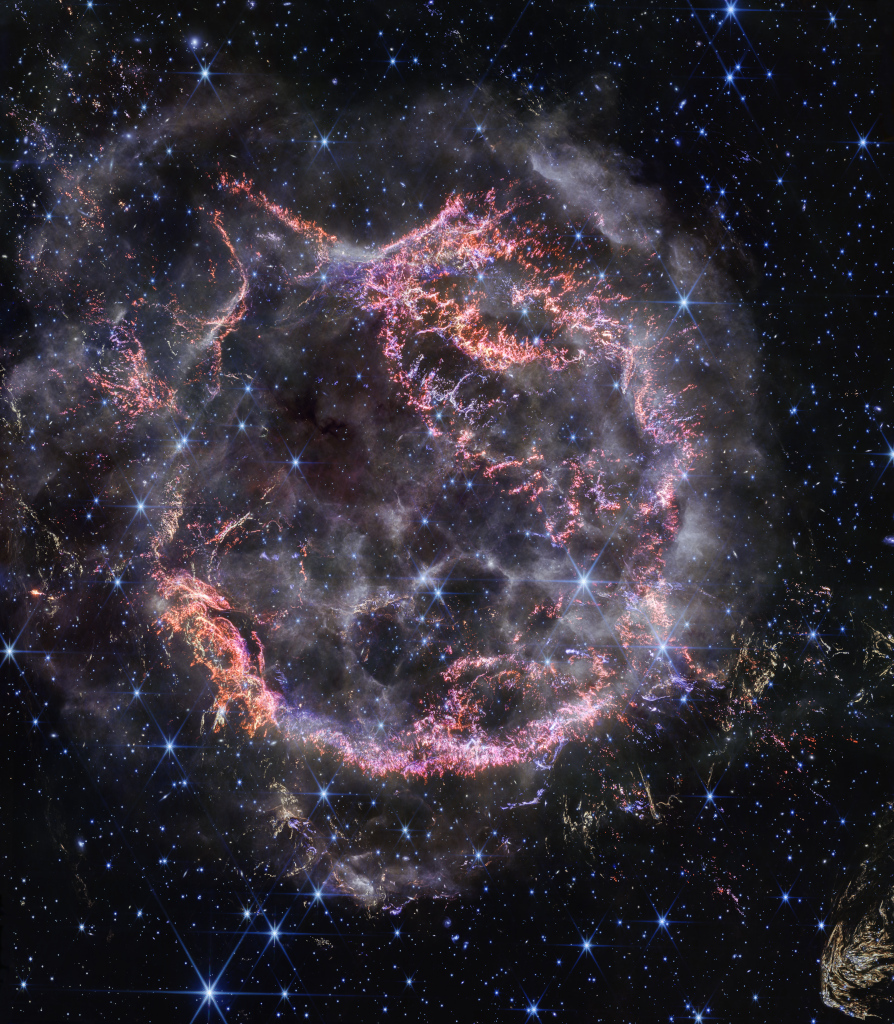仙后座 A 號超新星殘骸
Supernova Remnant Cassiopeia A

發表日期:2025-01-17
銀河系中的大質量恆星有著壯觀的生命。 它們從巨大的宇宙雲團中坍縮出來,核熔爐點燃並在其核心中產生重元素。對於質量最大的恆星來說,只需幾百萬年,富集的物質就會被炸回星際空間,在那裡開始新的恆星形成。仙后座 A 不斷膨脹的碎片雲就是恆星生命週期最後階段的一個例子。大約 350 年前,地球的天空中首次出現了超新星爆炸產生的光,不過這道光要經過 1 . 1 萬年才到達我們這裡。這張由詹姆斯-韋伯太空望遠鏡拍攝的清晰的 NIRCam 影像顯示了超新星殘骸中仍然炙熱的細絲和結節。正在膨脹的爆炸波的白色煙霧狀外殼直徑約為 20 光年。在韋伯望遠鏡拍攝的周圍星際介質的詳細影像中,還可以看到這顆大質量恆星大爆炸產生的一系列光回波。
原文:Massive stars in our Milky Way Galaxy live spectacular lives. Collapsing from vast cosmic clouds, their nuclear furnaces ignite and create heavy elements in their cores. After only a few million years for the most massive stars, the enriched material is blasted back into interstellar space where star formation can begin anew. The expanding debris cloud known as Cassiopeia A is an example of this final phase of the stellar life cycle. Light from the supernova explosion that created this remnant would have been first seen in planet Earth's sky about 350 years ago, although it took that light 11,000 years to reach us. This sharp NIRCam image from the James Webb Space Telescope shows the still hot filaments and knots in the supernova remnant. The whitish, smoke-like outer shell of the expanding blast wave is about 20 light-years across. A series of light echoes from the massive star's cataclysmic explosion are also identified in Webb's detailed images of the surrounding interstellar medium.
※ 本文由萌芽機器人自動轉貼自每日一天文圖(Astronomy Picture of the Day,APOD),原文為英文,正體中文是透過 DeepL 翻譯及 OpenCC 進行自動處理,內容僅供參考,若有任何錯誤之處還請見諒!
關於每日一天文圖:每日一天文圖網站是美國國家航空暨太空總署與密西根理工大學提供的服務,網站每天提供一張影像或圖片,並由天文學家撰寫扼要說明其特別之處。